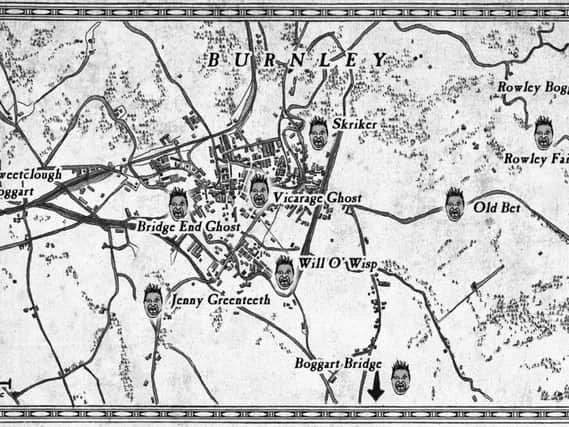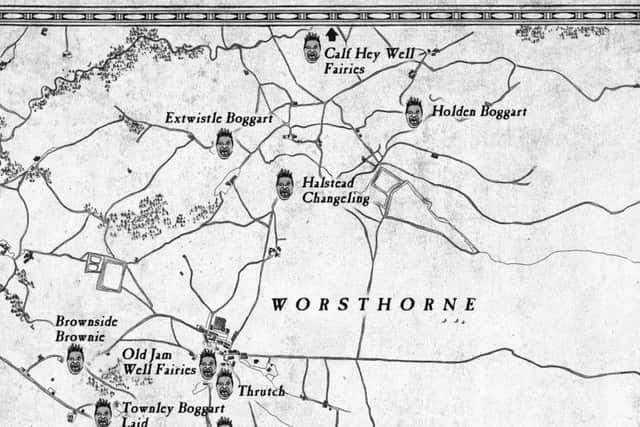Boggarts: Burnley historian's census on one of Lancashire folklore's most famous myths


The bridge crosses the stream and, legend has it, was home to one of Lancashire's most fearsome boggarts, a demonic creature from English folklore who demanded gifts from weary travellers seeking to cross. Petrified, the local townspeople offered the soul of the next living thing to cross the boggart's bridge if it would leave them alone. The boggart agreed.
The next morning, the people gathered and urged an old hen across the bridge. The boggart claimed the hen's soul in a puff of sulphur, never to be seen again. Boggart's Bridge can be safely crossed to this day.
Advertisement
Hide AdAdvertisement
Hide AdOnce greatly feared across large swathes of the North, boggarts are undeniably one of England's most mysterious and fearful supernatural monsters, with hundreds of thousands of words written about them in the 19th century. By the 20th century, however, the use of the term and records of boggart activities dwindled.


Now, a Burnley-born historian based in the Tuscan hills in central Italy is out to record what is left of the cultural phenomenon for his Boggart Census, the results of which he will publish in an upcoming book. An experienced writer on Britan's occult history, Simon Young, 46, is fascinated by 'Britain’s most understudied bogey.'
"Boggarts are supernatural creatures," said Simon, who grew up in Hebden Bridge. "But what kind of supernatural creature? Well, the answer changes from place to place and from family to family. Some people grew up with the idea that boggarts were devils, some elves, some ghosts, some a bogey man, some evil mermaids!
"I have one account of a boggart that was half human, half blue bottle..." added Simon, who emigrated to Italy 15 years ago to get married, now living on the continent with his spouse and three children. "This is one of the reasons I’m doing the survey to find out what recent memories tell us about the boggart’s shadowy identity.
Advertisement
Hide AdAdvertisement
Hide Ad"We have literally hundreds of thousands of words written about them in the 1800s, but modern folklorists largely ignore them. I’m looking for people born between about 1920 and 1970 who grew up with boggarts and who can fill this gap. I'm worried that this will be the last chance to write these precious Lancashire memories down, memories which are rapidly dying out."


Boggarts were said to occupy either homes or locations outdoors such as marshland, holes in the ground, under bridges, and even at dangerous sharp bends in the road. "Every part of Lancashire had its boggarts," explained Simon. "Burnley is special because this is one of the few parts of Lancashire where enough was written down for us to reconstruct the local boggart population.
"[There was] a whole series of boggarts that many locals were terrified by," he added of the Burnley boggarts of old. "Each one had its own characteristics and its own way of terrifying folk. My favourite is perhaps Holden Boggart, up above Worsthorne, which used to hang on a hedge in the shape of a rag and then transform himself into a black dog when people went by.
"I’ve [also] had memories of Ginny Greenteeth, one of the nastiest boggarts of all: she used to drown children. There have been memories of Boggart Bridge at Towneley Hall and the monster that lived there. Perhaps my favourite memory was, though, of a boggart-haunted barn in Coal Clough Lane in the 1930s."
Advertisement
Hide AdAdvertisement
Hide AdWith around 110 responses to his Boggart Census so far, Simon is encouraged in his mission not to let such an influential part of North West folklore die out. "The most curious memory was of a stretch of the road where a woman had been taught to say ‘Hello, Mr. Boggart’ as she drove by," said Simon. "It is a real privilege to gather in memories from this far back."
If you can help Simon, please get in touch via email at [email protected]. He is very happy to receive information on behalf of others. The findings will be published with Exeter University Press in the last chapter of a volume entitled 'The Boggart: A Study in Shadows'.